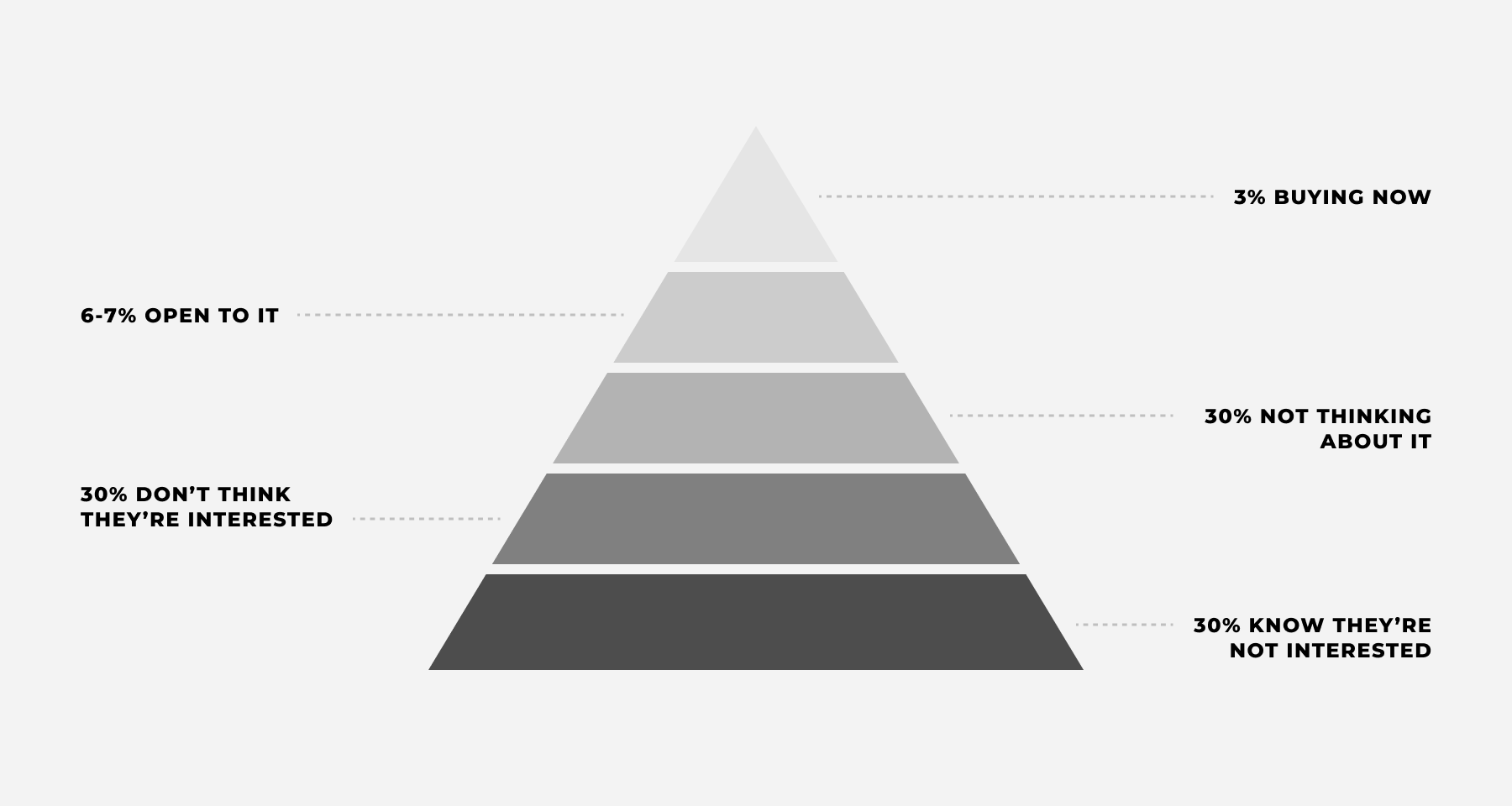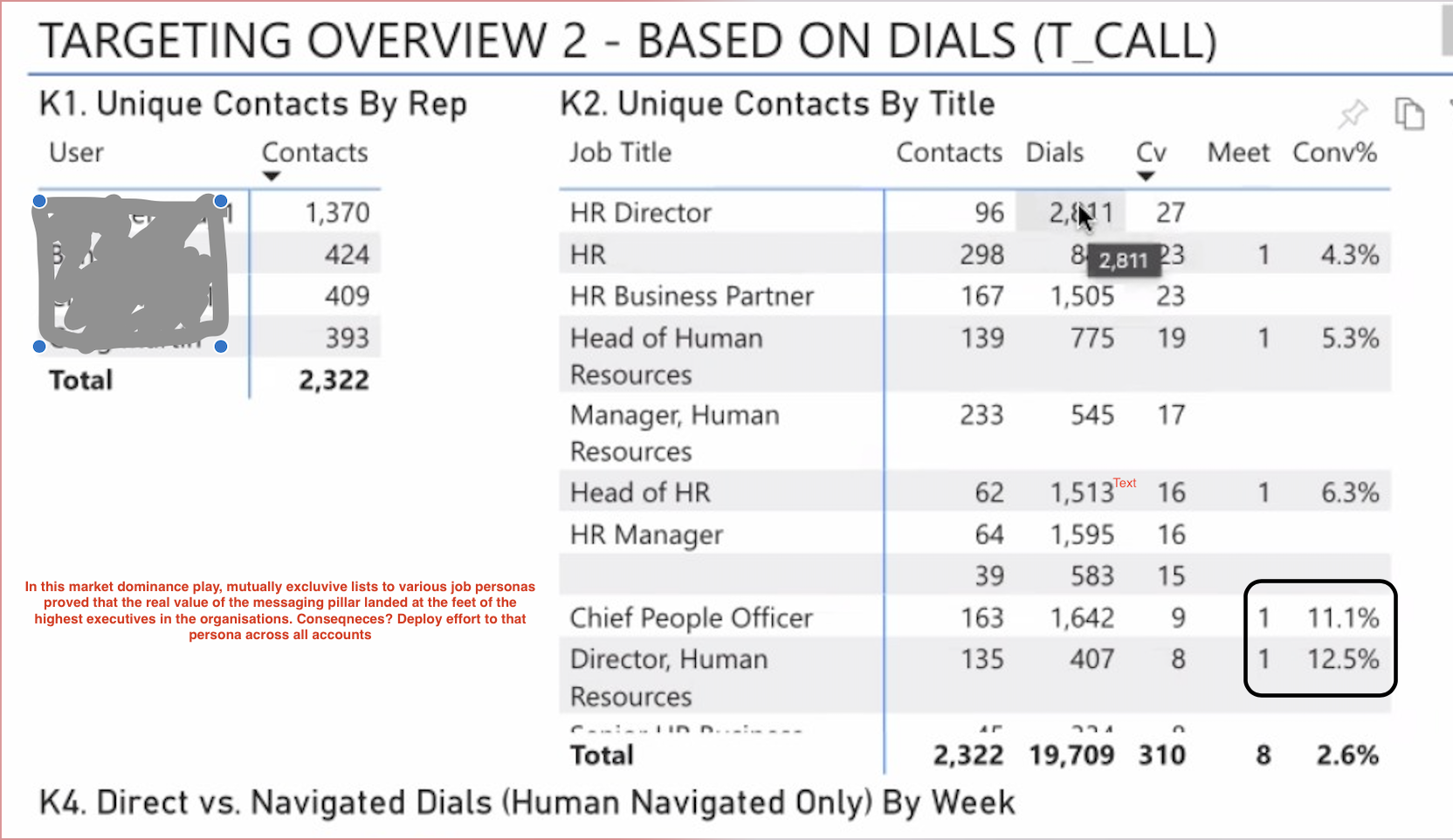8 minutes
Market dominance defined: The goods that people need + The will to do “what it takes” = The Market accepts you as the standard.
Market dominance is becoming the major player in a market, the 800-pound gorilla that sits where it wants. It’s challenging to go out of business when you’re dominant. Market dominance has a surprisingly simple formula:
Make a list, put together a good script, talk to everybody in your market, and stay consistent.
Determining how much of your market you can dominate and how quickly, is laid out in five stages. Take a gander at the buyer’s pyramid below from the legendary Chet Holmes:

There’s only so much you can expect to win at first. The majority of your market is won in the follow-up. If you can earn that, you can stay ahead of the rest of your competition (find the top 3% buying now).
Market or segment?
When we’re talking about dominating a market, we’re talking about dominating a market segment. In 1991, Geoffrey Moore told us that a market segment is a set of customers (or potential customers) for a given set of products and services who share a standard set of wants and needs and reference each other when making a buying decision.
A market segment provides you with leverage. If you sell to one customer, your chances of selling to additional, multiply in exponents. The key to this strategy is to satisfy those wants and needs with your products and services. As this happens and market resistance decreases, it gets easier to penetrate the market.
1. The first Question a CEO should be asking is this: “Is a market worth dominating?”
Establish this formula:
TAM (total addressable market) * 8.5% (Number of people in the market in any given quarter for something that looks like your product or service) * LTV (lifetime value) * Winnable rate (based on deal won % in your business today)
Example:
12,000 companies * 8.5% = 1000 (in-market companies)
1000* $18,000 (lifetime of 18 months at $1000 per month recurring revenue) = $18M
$18M * 25% (as an example) = $4.5M winnable revenue per quarter
2. Build a list
The list you build is the strategy for your GTM and where you document the execution of your hypothesis. Each list should be driven by a consistent theme so that you can measure its effectiveness. Think MECE. Mutually exclusive, comprehensively exhaustive.
Example scenario:
I can solve problems for the CTO, CISO, and Head of Cyber Analysis. The strategy here should be to make a list of exclusively CTOs and underpin each list with repeatable and scalable “one-to-many” messages. You want to be able to scientifically measure the efficacy of the list assessment, where you ultimately can win and scale your market dominance effort.
The diagram below shows that higher conversion rates are obtainable by prospecting into Chief People Officers and Directors of HR.

3. Have conversations
Why? The feedback loop is accurate and relevant in a way that other channels are not. Think about this: If someone takes the time to write back and tell you to go away, they mean it. In a cold call, you learn The Five No’s, which are all fantastic responses that can be turned into two things: Immediate re-direction of signals for future action. This is the most magical element in a market dominance strategy. Create and execute follow-ups when your prospect is ready to speak again (or slightly earlier). No other channel enables this effectively. What are those no’s?
“No – not me” with redirect to who then would be interested?
“No – Not now” – When would be better?
“No- not you” Competitor or heritage/reputation?
“No – not never” – Take off the list
“No – no reason” – message or list/targeting issue
“Yes – let’s take a meeting”; I am curious.
4. Create a path for every conversation
Never forget – 8.5% of a market is in consideration, so you can not afford to have your team let things fall through the cracks operationally. As a CEO, you will need to quickly measure and monitor the execution of your market dominance strategy. She needs to see the outcomes to take firm intervention if necessary or change the thesis based on the path trends illustrated in the conversation path. This disposition set helps you measure the flow and understand the content of calls in your market dominance playbook:
“Needs Attention, interest, Call Back Later Interest, Send Information, Referral, Meeting Scheduled Busy, Call Back Later, Incorrect Contact, No Referral No Interest, No Reason Given No Interest, Reason Given.”
These call states provide a deeper context as to the No’s we will inevitably hear every day providing your execution engine supplies this designation accurately.
5. “Fat stacks in the circle backs”
The core sales skill which sets the best from the rest is persistent follow-up. These reps are generally found in market-dominant companies. Why? They believe in following up, and you, as a CXO, should encourage it with everything you have.
Positive and neutral dispositions should always be called frequently and at a rate of at least once a quarter. The hack here is that you will double connection and conversion rates moving from 5% to 12% conversion and 3% to 20% contact rates as you build more follow-up inventory through your cold calling execution, helping you manage the market pyramid, which is rarely wrong.
The Math of Sales always tells the truth
In phase 1, we used maths to establish the truth about whether the market is worth dominating. Monitoring the maths throughout an outbound campaign is crucial, and setting the range of activities will govern your execution.
How to calculate your Math of Sales
We’ll work backward from a quota of 1 sale (you can do the multiplying later).
Goal: Close 1 sale
A 25% close rate means you need to pitch to 4 prospects.
An 80% meeting show rate means you need to schedule meetings with 5 prospects.
A 20% meetings booked rate means you need to speak with 25 prospects.
A 10% dial-to-connect or email reply rate means you need to reach out to 250 prospects once each (or 50 prospects five times each).

To work this out for your business, see a link here to the worksheet.
Before implementing sophisticated technology to achieve these means, it starts with your mindset. Think macro, generate conversations on demand, refine the quality (micro), and then blitz scale up at a speed where competitors can’t see you coming.
